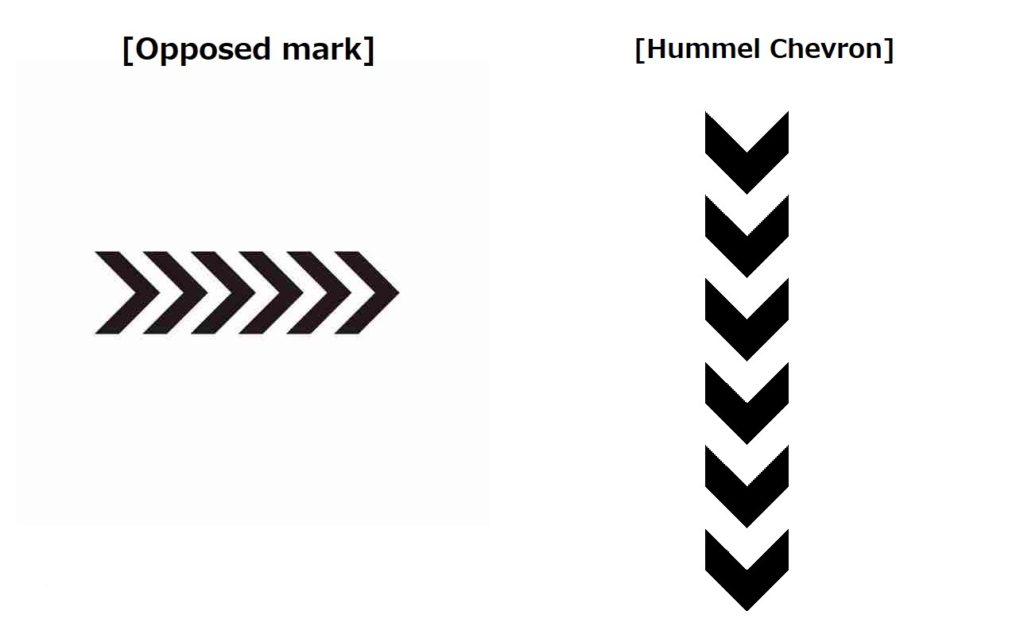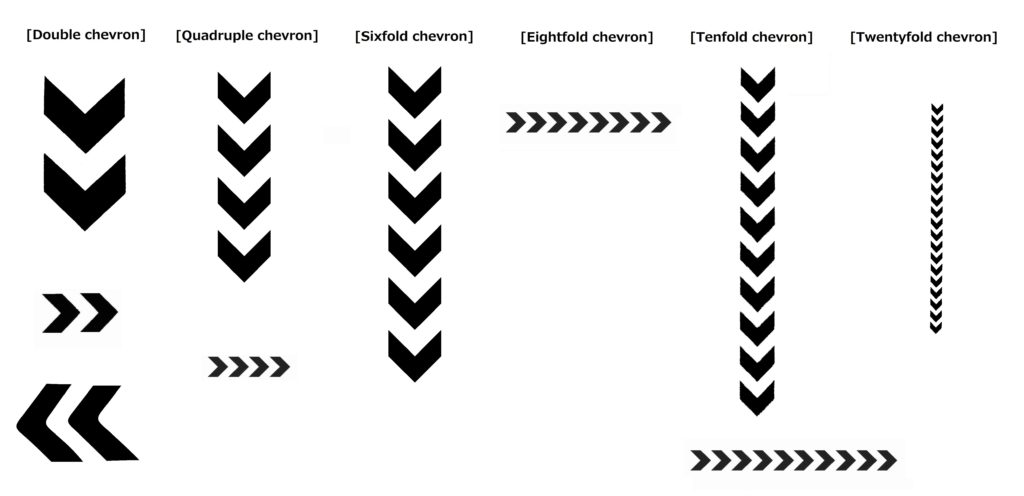Hummel gained a victory in a trademark opposition against Japanese TM registration no. 6190746 for sixfold chevron right device mark due to a conflict with Hummel Chevron.
[Opposition case no. 2020-90007, Gazette issued date: May 28, 2021]
TM Reg no. 6190746
Opposed mark, consisting of a sixfold Chevron right device, was filed by a Japanese company for use on apparel and shoes in class 25 on November 14, 2018.

The JPO examiner did not raise her objection to the opposed mark and granted protection on September 27, 2019.
Hummel Chevron
On January 14, 2020, Hummel Holding A/S, the leading sportswear company from Denmark, filed an opposition and argued the opposed mark shall be canceled in contravention of Article 8(1) of the Trademark Law because of similarity to senior trademarks that consist of multiple Chevron right, left or down devices (see below) in class 25 owned by Hummel.
Article 8(1) is a provision to prohibit registration of any junior mark that is identical with, or similar to earlier applied marks based on the “first-to-file” principle.

Apparently, Hummel has been eager to claim broader protection of the Hummel Chevron.
JPO decision
Among the citations, the JPO Opposition Board found the opposed mark is confusingly similar to the sixfold Chevron down mark from a visual point of view regardless of dissimilar in direction of Chevron based on the finding that both marks would not give rise to any specific meaning and different pronunciation. Besides, the goods in question are deemed identical or similar respectively.
Since the opponent mark was applied for one month before the opposed mark on October 17, 2018, Hummel is entitled to claim a prior application right under the article.
Based on the foregoing, the JPO side with Hummel and decided to cancel the opposed mark entirely in contravention of Article 8(1).
The Opposition Board did not mention whether the opposed mark is deemed similar to the Hummel Chevron other than the sixfold down.
